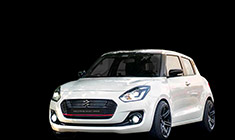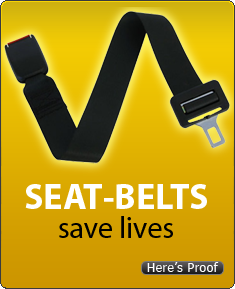News
Traffic jams & poor roads leading to excessive fuel wastage
I feel cars on Indian roads lose more than 20% of fuel sitting in traffic jams.
BHPian MadinMumbai recently shared this with other enthusiasts.
A boxing match I'd like to see - Environment Minister in the blue corner vs the Transport Minister in the red corner. (And in states where the same sorry chap is doing both jobs I'd like to see the match anyway)
I don't have facts or figures but my hunch is that we in India lose at least 20-30% of fuel in traffic jams caused by poor roads.
In Mumbai I'd wager 40-50% of our fuel is wasted due to traffic jams. I keep hearing about the pronouncements our new Environment Minister in Maharashtra makes and can't help thinking about the gazillion tons of CO2 emissions caused by Mumbai traffic. Something that can be easily fixed if the road intersections in Mumbai were better paved.
The standard movement procedure to cross a traffic intersection in Mumbai goes something like this:
The light turns Green - Set out - Stop! - Descend into a pothole- Stop! Navigate the best line- Make good use of the 1st gear- Emerge out of the crossing. Go on to the next traffic signal/open right turn.
Repeat!
Till your car, spirit or back gives up.
A traffic intersection that should normally take a couple of seconds to cross ends up taking 10 to 15 seconds at least. Thus causing endless pile-ups of cars. All with ACs on soaking in the good stuff put out by the petroleum gods. And this is the condition of each and every intersection in the suburbs. Something that any civil engineer, with a modicum of honesty (or sense), could fix easily.
Could we request governments start with the low-hanging fruit that is easy pickings? Just fix the traffic intersections and see a drastic reduction in traffic jams.
Here's what BHPian fhdowntheline had to say on the matter:
The traffic jams in Indian cities is because of the disparate capabilities of vehicles. In the developed countries, you more or less only have cars and heavy commercial vehicles on the roads, only occasionally do you see 2-wheelers.
Here, you have anything starting from a hand-cart, bullock cart to a moped to Bullet to autorickshaw to an Alto all the way up to a Lambo, and not to mention commercial vehicles from the Piaggio Ape to Ace to 407 to 1210SE and beyond! It is next to impossible to regulate such traffic.
The only thing that may work is to restrict certain classes of vehicles on certain roads. The Mumbai-Pune expressway is not available for anything below 4-wheelers, even though compliance is less than 100 %. As a result, to a great extent, the traffic is smooth.
Here's what BHPian sunilch had to say on the matter:
But I personally believe Metro commuters will mainly be those who still prefer Public transport, Bikers /Scooters goers and few who will have easy and nearby access to Metro for both - home and office.
Car users will continue to use cars. Immediately after lines are open, we may see some drop in traffic but again after some time, Metro use will increase and so will car use. We are accustomed to taking a little bit of suffering over some other factor that may be in our favour.
Delhi Metro ridership is strong but still, we have a lot of cars on the road and traffic in Delhi during peak periods.
I guess during non-peak hours, traffic will reduce in Mumbai after the metro opens. Peak hour traffic will remain the same more or less.
Regarding roads and rules - We know the level of education of our Politicos and some of the municipal staff. We know their priorities. We need to vote with our priorities, ask them questions when they ask for it and hope for the best. Without doing so, we are bound to suffer more.
Check out BHPian comments for more insights and information.
- Tags:
- Indian
- Member Content
- Traffic
- fuel






_2.jpg)












